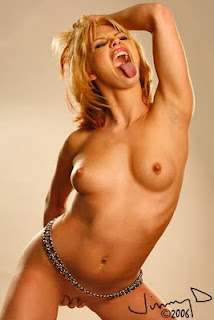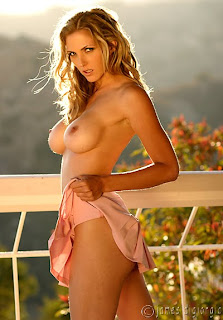
Some photographers lay claim to an identifiable personal style. Others depend on viewers of their work, from Facebook or Flickr friends to clients to photo editors even to art critics, to describe their style for them. Many other photographers say they're still in search of an identifiable personal style or that their style is dynamic and ever-evolving.
Whether a distinctive personal style, static or dynamic, is more appropriately described by the photographers themselves or by viewers of his or her work, I'm really not sure. I'm not sure it matters who does the describing. The thing that does matter, I suppose, is that your style is well received by others.
For some, I suppose, having a style, well-received or otherwise, doesn't really matter. You see, some of those folks are photographers who claim they're simply and exclusively doing this thing for themselves and themselves only... which then begs the question, "If that is so, why do you bother sharing your photos with others on forums and elsewhere?"
I should note that I'm not writing today about the merits of having a recognizable, distinctive, and identifiable style, regardless of whether that style is subtle or obvious or common or unique. I think most will agree having a recognizable style is, for the most part, a good thing. More so if that style resonates positively with viewers. For shooters like me, those who make a living (or some part of it) with photography, having a recognizable style is even more of a good thing if that style resonates well with the people who write checks, a.k.a., clients. That includes established clients and, probably more importantly, potential clients.
How are many photographers' personal styles described?
I think describing or defining a personal style mostly begins by categorizing some very important aspects of the work including how that work is created. This is probably truer now, in the digital age, than ever before. If there's two, major, categories that often define, in whole or in large part, today's breed of photographer as well as their styles, it probably revolves around whether their overall style is mostly captured with a camera or is mostly created in post-production.
Some of you might disagree with the above statement. Still, I think it's true. Style-related discussions are often seen on a few of the photographer/model forums I frequent. In many of those discussions, it's obvious it can often be a sensitive subject.
Some shooters seem to feel the need to aggressively, sometimes angrily, defend their methods when questioned (in polite or sometimes not-so-polite ways) regarding how they arrive at their finished photos. It's been my observation that those people, the ones who get angry or defensive, are most often those who rely more heavily on post-processing than production to achieve their work.
Many photographers, of course, simply and unemotionally share their methods. Still others prefer to remain elusive and mysterious about it. My opinion? Whichever way you choose to express yourself, well, that's your business. In the grand scheme of things, it's really unimportant and matters little. If it makes you happy to rant about how your way is the right way, then go for it. If you don't care to share your techniques, oh well. The sun will still rise tomorrow regardless of what you or anyone else says or doesn't say on a photography forum or how you make your photos.
It's likely that some, perhaps many of you, believe your style is achieved through fairly equal doses of production and post-production. Personally, I disagree. From the many, many images I regularly view, it's often obvious (to me) whether a shooter's personal style is mostly a product of what comes out of the camera or is, to a much greater extent, created via post-processing. (I'm talking style here people, not every element of your photos.)
Style is an intangible factor. Still, i think I can assess a shooter's style, in terms of it being mostly camera-related or mostly post-related, with the 80/20 rule. As with many things, the 80/20 rule often applies. Why not apply it to photographic styles? At least in terms of how a given style is arrived at. So, that's what I'm going to do. I'm going to apply the 80/20 rule when categorizing the personal styles exhibited, and how they're arrived at it, by many if not most digital photographers.
Yep. It seems to me most shooters' styles are either somewhere around 80% shooting style and 20% post-processing or visa versa. These days, of course, I see plenty of the visa versa styles. But that's not to say there's anything inherently wrong with the way the visa versa people, i.e., those whose work is about 80% processing and 20% production, go about making their photographic imagery.
Please also note that while I might have a personal bias regarding which way the 80/20 should be divvied in terms of which way most often resonates best with me, my bias does not necessarily convince me that one or the other is automatically superior. Fortunately, it's still a free country, leastwise when it comes to having opinions or employing photographic techniques. So, while I have an overall opinion in this matter, plus I have my own ways of arriving at whatever it is that makes my personal style, "my personal style," I don't necessarily believe my opinions or methods are any more valid than the opinions or methods of others. (How's that for being diplomatic?)
Applying the 80/20 rule to style seems especially appropriate in the digital photography age. When photography was analog, the style exhibited by nearly all photographers was mostly a product of their shooting techniques, their aesthetics, and their "eye." In other words, their styles were incorporated into the pictures, for the most part, the moment they snapped their photos.
Sure, there were exceptions. Back in the analog day, some well-known photographers exhibited big chunks of their styles as a result of work performed in a darkroom.
Famed glamour photographer, George Hurrell, comes to mind. I'd put a 50/50 ratio on Hurrell's work. His camera work and lighting was certainly distinctive but the work he did in the darkroom was equally distinctive. When it comes to shooting, coupled with darkroom work, I'd also probably slap a 50/50 ratio on Ansel Adams' work. For the most part, though, the great majority of analog photographers captured their personal styles with their cameras, more so than via work performed in a darkroom.
Looking at a few of today's notable photographers, I'd say Annie Leibovitz's style is mostly captured in the camera. Conversely, the stylistic work of celebrity photography team, Klinko & Indrani, seems more a product of post-processing than out-of-the-camera style. Remember, I'm simply referring to style. Style is just one component of terrific (or crappy) photography.
Here's my advice: Once you've determined or admit to which camp you mostly fall in -- the shooting camp or the post-processing camp -- and regardless of which camp mostly seems to best reflect the way your personal style is achieved, I think it's important to fully embrace your style-related methods of capturing or creating your images rather than worrying about whether one method is superior to another. If, like me, you depend more on things like camera work, lighting, exposure, and interaction with the model to achieve some sort of style, that's cool. If you depend more on Photoshop or some other image processing software, well, that's cool too. Whatever floats your boat, right?
BTW, whatever your style might be or however you arrive at it, if it doesn't seem to be working out for you, that is, your personal style isn't generating the kind of responses you believe (or hope) it deserves, how about instead of aggressively defending it, you know, playing the "art card" or whatever, you consider re-thinking how you approach your photography in terms of your personal style and how you get there. After all, a terrific and well-received photographic style, like beauty, is most often reflected in the eyes of its beholders, not the images' creators.
The pretty girl at the top is Katrina. I've posted this pic before but I think it's a good example of a style I try to incorporate in many of my glamour photos: one where, while using commonly-seen lighting and compositional styles, I also try to include poses and expressions that are on the emotional side, whatever that emotion might be or one I might decide to try to capture.
 I came across a terrific video today. It's hosted by photographer, Jay Morgan, and I think it's one of the best and most succinct and easy-to-digest videos I've seen regarding softbox selection.
I came across a terrific video today. It's hosted by photographer, Jay Morgan, and I think it's one of the best and most succinct and easy-to-digest videos I've seen regarding softbox selection.









